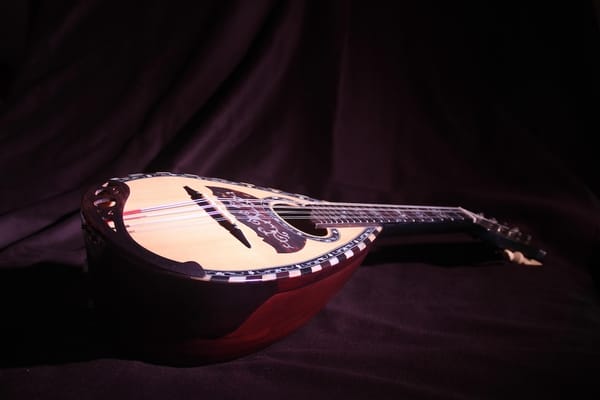Music Production 101: A Beginner’s Guide to Recording and Mixing
Dive into the world of music production with this beginner’s guide to recording and mixing. Learn how to set up your home studio, choose the right gear, and start creating your own tracks with confidence.

In the digital age, music production has become more accessible than ever before. With a modest investment and a touch of curiosity, anyone can set up a home studio and begin recording, editing, and mixing their own music. Whether you're an aspiring singer-songwriter, an instrumentalist, or simply interested in the art of sound, this beginner’s guide will walk you through the basics of music production—from choosing a Digital Audio Workstation (DAW) to selecting your first microphone and audio interface.
What is Music Production?
Music production encompasses the entire process of creating a song or instrumental track—from the initial idea and recording to editing, mixing, and mastering. In this article, we’ll focus on the recording and mixing stages, which form the foundation of any music production journey.
Step 1: Choosing a Digital Audio Workstation (DAW)
The DAW is the heart of your studio setup. It’s the software where you record, arrange, edit, and mix your music. Choosing the right DAW depends on your musical goals, workflow preferences, and budget.
Popular DAWs for Beginners:
- GarageBand (Mac only) – A free and intuitive platform, ideal for beginners.
- Ableton Live – Great for electronic music and live performance setups.
- FL Studio – Widely used by beatmakers and producers of hip-hop and EDM.
- Logic Pro X (Mac only) – A professional yet affordable option with an expansive sound library.
- Reaper – Highly customisable and affordable with a small footprint.
- Pro Tools – The industry standard for studio recording, but has a steeper learning curve.
When starting out, don’t worry about choosing the “best” DAW. Most offer free trials—download a few, experiment, and see what feels intuitive to you.
Step 2: Setting Up Your Home Studio
You don’t need a fancy studio to start producing music. A small room with minimal background noise and a few key pieces of equipment will suffice.
Essential Gear for Beginners:
- Computer
Your DAW will need a reliable machine to run on. Both Mac and PC work well; focus on having enough RAM (8GB minimum) and a decent processor (i5 or above) for smooth performance. - Audio Interface
This device connects your microphone and instruments to your computer. It converts analogue signals into digital audio that your DAW can understand.
Beginner recommendation: Focusrite Scarlett 2i2, PreSonus AudioBox, or Audient iD4. - Microphone
A good microphone is essential for capturing vocals and acoustic instruments.- Condenser microphones (e.g. Audio-Technica AT2020 or Rode NT1-A) are great for studio vocals.
- Dynamic microphones (e.g. Shure SM58) are robust and suitable for louder sound sources.
- Headphones or Studio Monitors
Quality closed-back headphones (like Audio-Technica ATH-M50x or Beyerdynamic DT 770 Pro) are crucial for accurate monitoring while recording. Studio monitors (speakers) come later, once you're ready to mix with greater precision. - Cables and Mic Stand
You’ll need XLR cables to connect your mic to the audio interface, and a mic stand to position it properly. - Pop Filter
This mesh screen helps reduce plosive sounds (‘p’, ‘b’) when recording vocals.
Step 3: Recording Your First Track
Once your DAW and equipment are set up, it's time to record.
Preparing to Record:
- Room acoustics: Try to record in a space with minimal echo. Rugs, curtains, and bookshelves can help absorb reflections.
- Mic placement: Position your microphone at chest or mouth level, around 6–12 inches away. Use a pop filter if recording vocals.
- Audio levels: Aim for healthy input levels. Avoid peaking (clipping), but don’t record too quietly either. Levels should hover between -18dB and -6dB.
Inside the DAW:
- Create a new track (audio for vocals or guitar; MIDI for software instruments).
- Arm the track for recording, check the input source, and set monitoring if needed.
- Hit record, and capture your performance!
Don’t worry if you make mistakes. That’s what multiple takes, editing, and comping are for.
Step 4: Layering and Arrangement
After recording your initial idea—perhaps a vocal line and guitar part—you can begin layering other elements. You might add:
- Drum loops or use a virtual drummer/instrument.
- Bass lines, recorded or programmed via MIDI.
- Backing vocals, harmonies, or vocal doubles.
- Effects or pads to create atmosphere.
Your DAW allows you to arrange clips, move sections, loop parts, and build your song structure (intro, verse, chorus, bridge, etc.).
Step 5: Basic Mixing Techniques
Mixing is the art of balancing all elements of your track to make it sound cohesive and polished. Beginners should focus on the fundamentals:
1. Volume and Panning
- Set levels so that no element overwhelms the rest.
- Pan instruments slightly left or right to create space in the stereo field (e.g. keep vocals and kick drum centre, pan guitars or backing vocals).
2. Equalisation (EQ)
- Use EQ to clean up each track. For instance:
- Roll off low-end rumble on vocals below 80Hz.
- Cut muddiness in guitars around 200–400Hz.
- Boost clarity in vocals around 3–5kHz.
3. Compression
- Compressors even out dynamic range—making soft parts louder and loud parts softer.
- Use light compression on vocals and drums to control peaks.
4. Reverb and Delay
- Add reverb for a sense of space. Use it sparingly on vocals and instruments.
- Delay (echo) can add interest to vocals or guitar parts.
5. Automation
- Use automation to adjust volume or effects over time—for example, fading in a pad or gradually increasing reverb on a vocal.
Step 6: Exporting and Sharing
Once you're happy with your mix, it’s time to bounce or export your project into a final audio file (usually WAV or MP3). Make sure to:
- Leave a few seconds of silence at the start and end.
- Avoid clipping.
- Use a consistent file name and sample rate (44.1kHz/16-bit is standard for MP3s).
You can now upload your track to platforms like SoundCloud, YouTube, Bandcamp, or Spotify (via a distributor like DistroKid or TuneCore).
Tips for Staying Inspired
- Reference professional tracks in your DAW to understand how commercial mixes sound.
- Watch tutorials on YouTube or follow online courses on sites like Coursera, Skillshare, or Udemy.
- Collaborate with other musicians and producers—online or locally.
- Don’t rush. Your first few songs might not sound perfect, but every project is a step forward.
Final Thoughts
Starting out in music production might feel overwhelming, but with each new track you complete, you'll gain confidence and skill. The beauty of modern production is that creativity trumps expensive gear—many hit records have been produced in bedrooms with just a laptop, a mic, and passion. Whether you're crafting a demo, scoring a short film, or recording your band, the tools are at your fingertips. Keep experimenting, stay curious, and enjoy the process of turning your musical ideas into reality.





